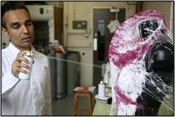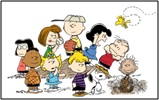
Fashion and science have a close relationship, in that a designer, with their needs and whimsy, will look to science to supply the answers. Biology looks at the surrounding world and into the world within a petri dish, to harvest, and create the living building blocks. Chemistry answers questions about compounds, molecules, and atoms that combine to make fibers. Fibers that are stretched, pulled, coiled and otherwise manipulated to make the clothes that express the fashion. Technology supplies hardware and software to develop ideas into design, testing them with reality. Engineering connects technologies, producing unique creations, such as shirts that produce energy each time a person moves. And mathematics provide for the precision and logic that allows the pieces to be cut, formed, and arranged in space to realize the designer’s concept.
that express the fashion. Technology supplies hardware and software to develop ideas into design, testing them with reality. Engineering connects technologies, producing unique creations, such as shirts that produce energy each time a person moves. And mathematics provide for the precision and logic that allows the pieces to be cut, formed, and arranged in space to realize the designer’s concept.
 Fashion draws consistently from science, technology, engineering, art, and math; and a successful designer is acquainted with all these disciplines. Academic programs in Applied Sciences and Human Ecology (both formally known as Home Economics) advise and
Fashion draws consistently from science, technology, engineering, art, and math; and a successful designer is acquainted with all these disciplines. Academic programs in Applied Sciences and Human Ecology (both formally known as Home Economics) advise and ![]() require students interested in the fashion industry to seek knowledge in all these fields. These degreed graduates are not only the apparel designers and merchandisers, but, they are the analytical textile technologists, the design engineers, the research scientists, the technical textiles designers, and the computer-aided fashion designers.
require students interested in the fashion industry to seek knowledge in all these fields. These degreed graduates are not only the apparel designers and merchandisers, but, they are the analytical textile technologists, the design engineers, the research scientists, the technical textiles designers, and the computer-aided fashion designers.
The work of these individuals finds its way into our lives. The manufactured fiber nylon (designed as an alternate to silk) was militarily important in WWII for parachutes. Nylon
alternate to silk) was militarily important in WWII for parachutes. Nylon
combined with polyester, originally marketed as an economical easy to care for fabric, made up the parachutes that lowered the Rovers to the surface of Mars. (The Ares rockets used to launch Orion use Kevlar in the parachutes of its recovery system. A fabric originally designed to make a lighter tire in response to the oil shortages of the 1960’s; Kevlar is used in a variety of protective clothing.)
 Affecting everyday life, while making you look good, solar textiles will power your hand held devices.
Affecting everyday life, while making you look good, solar textiles will power your hand held devices.
Imbedded light fibers, electronics, and nanotechnology will not only change the appearance of what we are wearing but will track us medically. With a wave of the hand, what we are wearing will not only change how it looks, but, will functionally shape-shift. Spray on fabrics will create a chemise or a medical patch. And an improved environment will be promoted by recycled fabrics that reduce waste and catalyst coated fabrics that break down air pollutants. In this way, these collaborations of fashion and science address real world situations pushing beyond the aesthetics of fashion.

But once established; fashion pushes back. Individual fashion is chosen in many ways for many reasons ranging from the financial to the emotional. Your pocketbook or your friends might persuade you to put on the elegant dress or the heavily worn jeans. It may simply be your mood at the moment that makes you don the black sweatshirt or the red polo. But what is put on, directs others to react to what is put on to (that’s you). In about seven seconds people look at you and decide who you are. Colors affect moods, and how well your clothes fit suggest, rightly or wrongly, what your personality traits are. What about the  wearer; can a purposeful choice of style affect the wearer’s behavior? Does clothing make the person? Does a uniform make you stand straighter, study harder? Will you be more mentally prepared in certain situations if you are dressed in the appropriate manner? I know I have experienced these situations. But at what level of consciousness are we truly affected?
wearer; can a purposeful choice of style affect the wearer’s behavior? Does clothing make the person? Does a uniform make you stand straighter, study harder? Will you be more mentally prepared in certain situations if you are dressed in the appropriate manner? I know I have experienced these situations. But at what level of consciousness are we truly affected?

Fashion might have a much more subtle and possibly longer effect on us than we think. In research involving what is being called enclothed cognition (a subset of embodied cognition that states that the body can influence the mind) studies are showing what you wear not only changes the perceptions of others, but can change the psyche of the wearer. These studies published in the Journal of Experimental Social Psychology and then reported in an article published in The New York Times in April 2012; show statistical differences in how people perform attention-related tasks when wearing different types of clothing, as well, as the same style of clothes defined differently. In the latter case the clothing was a lab coat.
In one of the trials of these studies, two groups wore identically looking lab coats; one group was told that the coat had previously been worn by a doctor and the other group believed the coat was worn by a painter. The group that believed that they were wearing the doctor’s coat performed better (50% less errors) on sustained attention tasks than those wearing the presumed painter’s coat. Along with other varied trials, the authors of these studies say that this result shows that enclothed cognition is based on both the symbolic meaning of certain clothes and the physical experience of wearing them. However, further research is needed, important questions remain.
told that the coat had previously been worn by a doctor and the other group believed the coat was worn by a painter. The group that believed that they were wearing the doctor’s coat performed better (50% less errors) on sustained attention tasks than those wearing the presumed painter’s coat. Along with other varied trials, the authors of these studies say that this result shows that enclothed cognition is based on both the symbolic meaning of certain clothes and the physical experience of wearing them. However, further research is needed, important questions remain.
To what length does fashion affect the human psyche? Will on e always feel more focused and attentive in a white coat, or would we habituate? Do the cognitive changes last for long periods, or do they eventually wear off? There are some very interesting possibilities as we consider enclothed cognition as part of the overall concept of embodied cognition.
e always feel more focused and attentive in a white coat, or would we habituate? Do the cognitive changes last for long periods, or do they eventually wear off? There are some very interesting possibilities as we consider enclothed cognition as part of the overall concept of embodied cognition.
Embodied cognition research has shown that behavior such as acting with confidence, even if we are not confident, can affect hormone levels in the body. These same hormones can change how our genes are expressed, and recent studies in epigenetics suggest that some of these changes may be able to be passed on. So, the advice to those starting a family may be to dress with confidence so their children will be confident.
confident, can affect hormone levels in the body. These same hormones can change how our genes are expressed, and recent studies in epigenetics suggest that some of these changes may be able to be passed on. So, the advice to those starting a family may be to dress with confidence so their children will be confident.
 Fashion and science have a give and take relationship. Aesthetics and utility go hand in hand and the outcomes can be celebrated and measured. For as much as we believe we are dictating changes to fashion, fashion may be transforming us on levels we do not yet fully understand.
Fashion and science have a give and take relationship. Aesthetics and utility go hand in hand and the outcomes can be celebrated and measured. For as much as we believe we are dictating changes to fashion, fashion may be transforming us on levels we do not yet fully understand.
Did you see the fashion at the Cummer Museum? And did you see?


